In recognition of National Fishing & Boating Week (June 6 – 13, 2015), an event of Great Outdoors Month, here are just a few examples of how Corps across the country help create or improve fishing and boating opportunities.
As boaters and fishing enthusiasts know all too well, human activity can have a disastrous effect on our waters. Carelessness is what leads to trash-clogged rivers, wetlands coated with oil slicks, and depleted fish populations.
Fortunately, there are many people who are not only aware of how their actions affect our waterways, but who make an effort to protect our lakes and rivers. Among these environmentally-conscious individuals are Corpsmembers; young adults enrolled in America’s Service and Conservation Corps.
Corps are comprehensive youth development programs that engage diverse young adults in service projects that address local environmental and community needs. Read below to learn about seven service projects across the country through which Corps enhanced fishing and boating opportunities.
1. Kayaking in Los Angeles – LA Conservation Corps 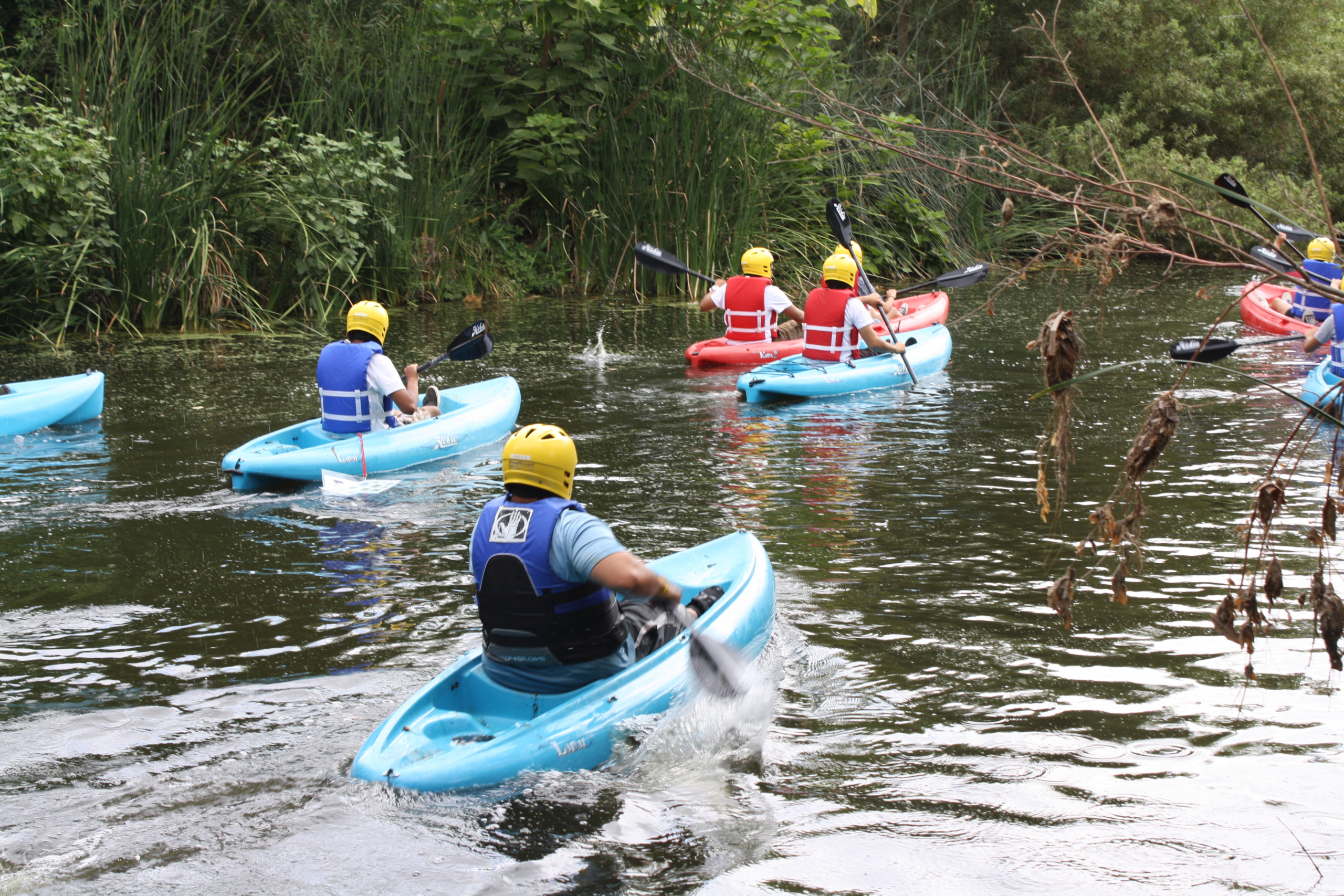
In 2011, LA Conservation Corps received a license to operate the first non-motorized boating pilot program on the Los Angeles River. All 280 available seats sold out within the first 10 minutes of the program’s online launch. During the first week of the program, the waiting list surpassed 350 people.
This early success allowed the Paddle the LA River program to expand. Today, kayaking trips are led five days a week throughout the summer by members of LA Conservation Corps who have been trained in swift water rescue. These Corpsmembers build leadership skills and spread environmental awareness as they educate kayakers about the ecology of the river during the course of the 1.5 mile trips. By paddling this scenic stretch of river, Angelenos can discover a side of LA they might not have ever known existed.
2. Veterans Beautifying Beaches – Washington Conservation Corps 
Marine debris is harmful to aquatic life, unpleasant for beachgoers, and potentially dangerous for boaters. It is estimated that nearly 270,000 tons of plastic debris float on the surface of the world’s oceans. While some of this trash eventually sinks, a lot of it drifts ashore. The good news for ocean-lovers is that Corps based in coastal communities are frequently involved in beach cleanups.
For example, United States veterans serving with Washington Conservation Corps removed over 4,000 pounds of marine debris from 5.5 miles of Bellingham Bay over the course of just seven days in 2014. Their efforts were part of a larger cleanup project through which more than 11 tons of trash were removed from the beaches of the Northwest Straits between March and September of last year.
Through this project, not only did northern Washington’s beaches receive a much-needed cleanup, but a group of young veterans continued to serve their country as part of their transition back to civilian life.
3. Healthy Aquatic Ecosystems in Montana – Montana Conservation Corps 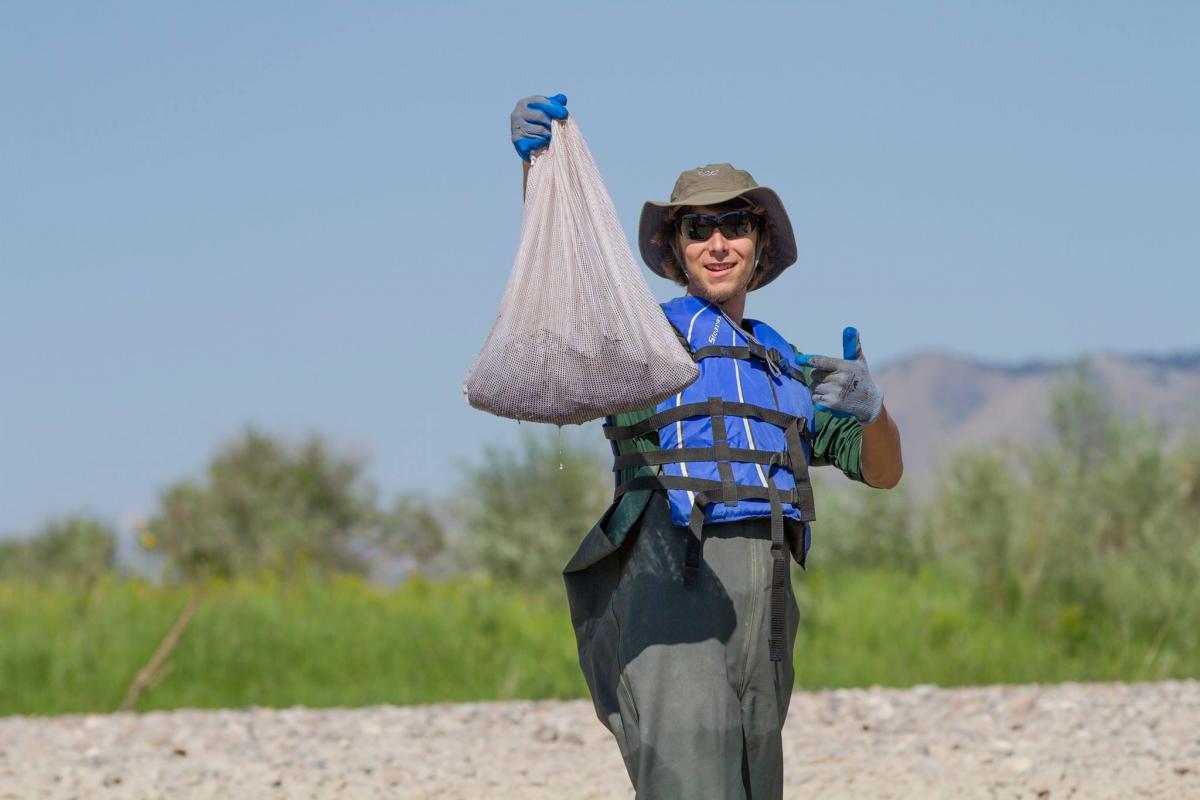
Montana Conservation Corps (MCC) engages both Corpsmembers and volunteers in protecting the pristine waters of the Northern Rockies. In 2014, Corpsmembers removed invasive Tamarisk (commonly referred to as salt cedar) from the banks of over 40 miles of the Missouri River. Tamarisk is extremely invasive, replacing native plants with impenetrable thickets that can make riverside recreation impossible. Corpsmembers also removed Eurasian watermilfoil, an invasive plant that forms dense mats on the surface of the water, from an 11-mile section of the Jefferson River. Watermilfoil can quickly overtake native plants, rob other aquatic life of oxygen, and interfere with fishing and boating.
Last year, MCC Corpsmembers also participated in a fin clipping project for Montana’s Fish, Wildlife, and Parks division. Approximately 150,000 fish were marked as a way to evaluate the effectiveness of fish stocking programs at numerous dams.
Recently, Montana Corpsmembers have been involved with the Flathead River to Lake Initiative.
Thanks to Corpsmembers and other volunteers, over 1,000 shrubs and trees have been planted along the Flathead this spring. The new plants stabilize the riverbanks and reduce the amount of sediment flowing downstream.=
In addition to Corpsmember projects, MCC engages the whole community in watershed protection through volunteer projects, education and outreach. Recurring volunteers with MCC’s “Stream Teams” have the opportunity to collect sophisticated water chemicals for state and federal databases. Episodic volunteers can still participate in a wide variety of projects focused on improving overall watershed health. Past projects have included river cleanups, wildlife and fisheries surveys, water quality and quantity monitoring, snowpack surveys, riparian habitat surveys, and teaching youth about conservation.
4. Local Youth Restoring the Gulf – CLIMB CDC | Texas Conservation Corps | The Corps Network |The Nature Conservancy 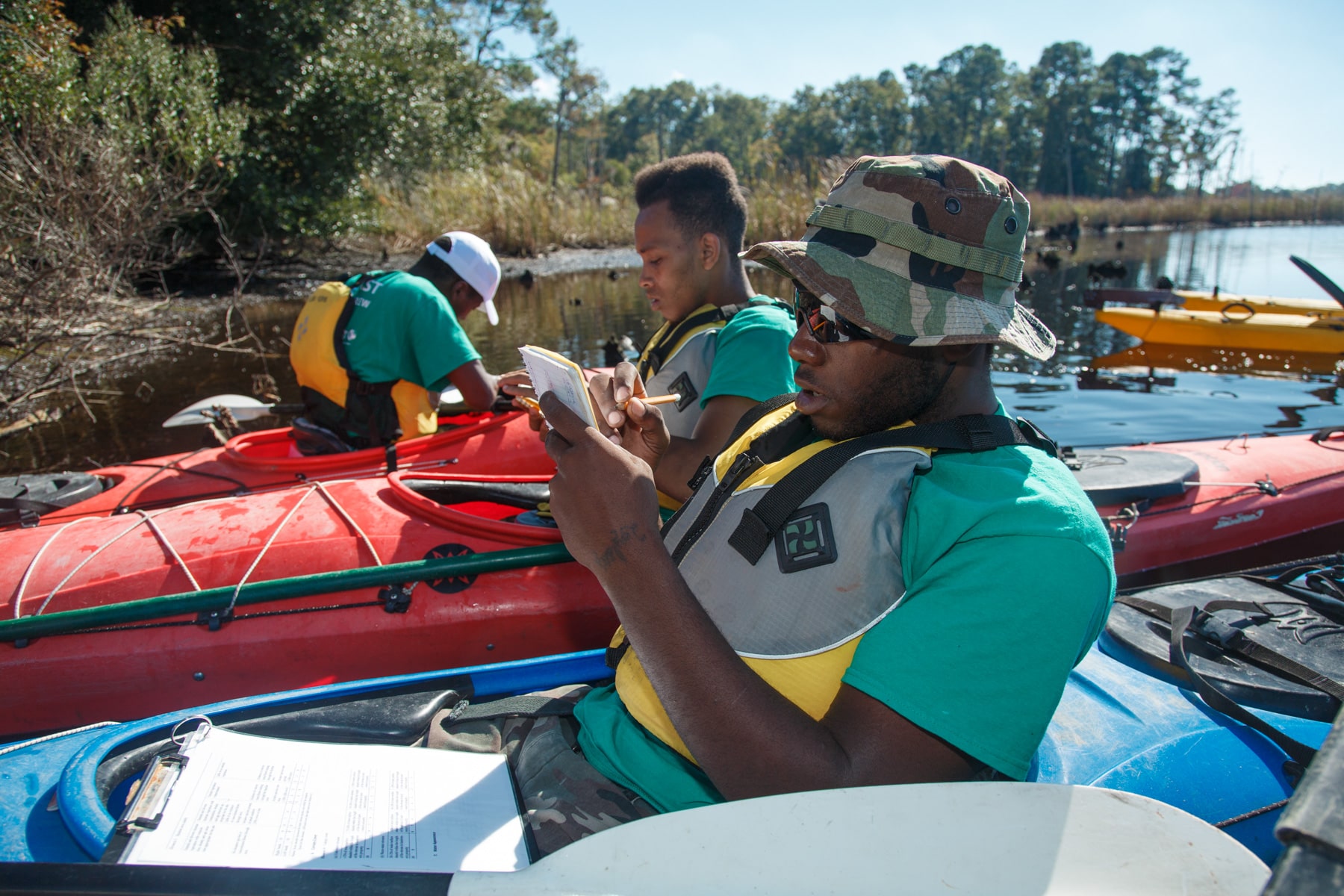
Over the last decade, the Gulf Coast has been battered by natural and man-made disasters, one of the most notable being the 2010 Deepwater Horizon oil spill which released 4.9 million barrels-worth of crude oil into the Gulf.
Although we have yet to see the long-term environmental and economic impact of recent disasters (ranging from the oil spill to hurricanes and flooding), mobilizing a trained environmental and disaster response workforce to effectively carry out restoration efforts is the best way to diminish any further ecological degradation.
The Gulf Coast Restoration Initiative is an effort to build the capacity of Service and Conservation Corps in coastal communities of Texas, Louisiana, Mississippi, Alabama and Florida. Led by The Corps Network and The Nature Conservancy, the initiative has operated two phases of a pilot project in which local Corpsmembers from CLIMB CDC, a Mississippi-based economic development organization, tested water quality and surveyed invertebrate and fish populations under the supervision of experienced Texas Conservation Corps Crew Leaders. Corpsmembers learned how to kayak and were trained in water safety, water monitoring techniques, and construction.
5. Protecting Hawaii’s Beaches – Kupu, Hawaii Youth Conservation Corps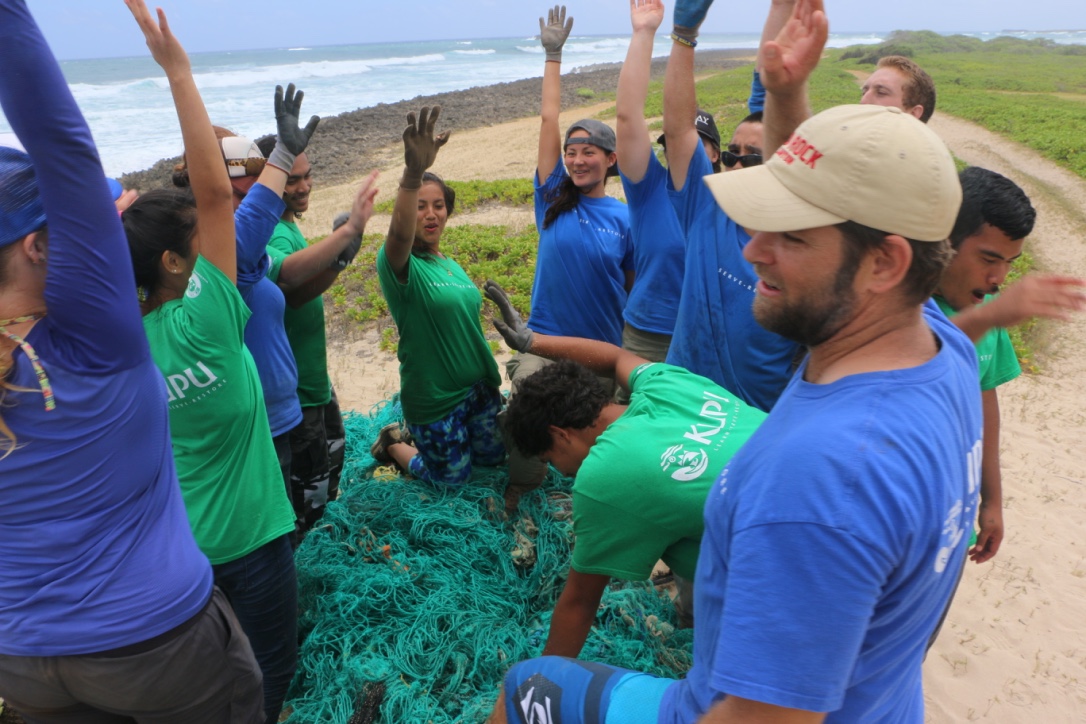
In the Hawaiian language, Kupu means “to sprout, grow, germinate, or increase.” The kupukupu fern is one of the first plants to bring life back to areas that have been devastated by lava flow. Taking its name from this vital plant, the organization Kupu, which houses the Hawaii Youth Conservation Corps, states that its mission is to “bring life back to the people, land, and ocean while restoring the larger community for a better tomorrow.” One way that Kupu embodies its mission is through organized service projects.
In April of this year, youth in Kupu’s Extended Internship Program and CommunityU Program participated in a weeklong service project in which they cleaned Malaekahana Stream and Kahuku Beach in Kahuku, Hawaii. The ocean plays a very important role in Hawaiian culture and is vitally important to the state’s economy. Keeping Hawaii’s beaches and waterways clean and healthy is a necessity.
One of the crew’s accomplishments was removing large ghost fishing nets from Kahuku Beach. These nets, which weigh hundreds of pounds, had been sitting along the shoreline for years, entangling fish, coral, turtles and other marine species. Crew members also removed invasive mangrove trees from Malaekahana Stream. The trees had completely choked out native flora and fauna; their removal will allow native aquatic plant and fish species to thrive.
6. Adopt a Channel – Orange County Conservation Corps 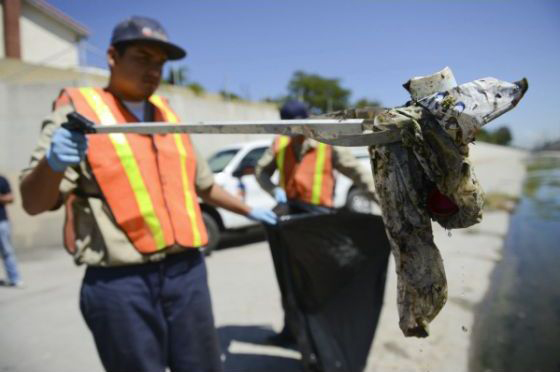
In California’s Orange County, over 350 miles of storm channels and urban waterways help transport rain and stormwater to the coast, where one can find some of California’s most pristine beaches and coastal ecological preserves. Over time, however, the county’s storm channels and waterways were neglected and accumulated debris and trash. Graffiti also spread throughout the system of channels, creating a sense of urban decay that stimulated gang activity.
A powerful storm could flood the county and severely damage coastal ecosystems if the channels remained clogged. Partnering with Orange County Conservation Corps and a number of other local organizations, Disneyland started a program to clean the channels. Modeled after the successful Adopt a Highway program, the pilot of the Adopt a Channel program was extremely successful: crews removed over 1,000 pounds of debris that otherwise would have been deposited into the Bolsa Chica Ecological Reserve. Corpsmembers also removed over 15,000 square feet of graffiti from two miles of the channel, leading to a 90% decrease in vandalism.
Adopt a Channel has encouraged the whole community to take ownership of their water resources and local coastal ecology. Each Adopter has the opportunity to provide a healthier habitat for fish, great blue herons, pelicans and other coastal animals.
7. Reinvigorating D.C.’s “Forgotten River” – Earth Conservation Corps

“Endangered youth reclaiming the Anacostia River, our communities and our lives” is the mission statement of Earth Conservation Corps (ECC). The Anacostia has been called “DC’s forgotten river.” Its 8.7 miles flow through some of the most impoverished neighborhoods in the nation’s capital. Though the river is beginning to recover thanks to government and private efforts, some of the communities along its banks continue to experience limited development and high crime.
Earth Conservation Corps works to reverse this trend by engaging youth from under-resourced DC neighborhoods in the environmental restoration of the Anacostia. Among other things, Corpsmembers and ECC volunteers remove trash and debris from the water, collect and analyze water samples, and stabilize the river’s banks with new plantings. The Corps has also been involved in bringing bald eagles and ospreys back to the river by improving nesting habitats and helping restore the river’s fish population. In past summers, ECC held Friday Night Fishing, inviting families from the community to the ECC dock on the Anacostia to learn how to reel in a fish.





































































